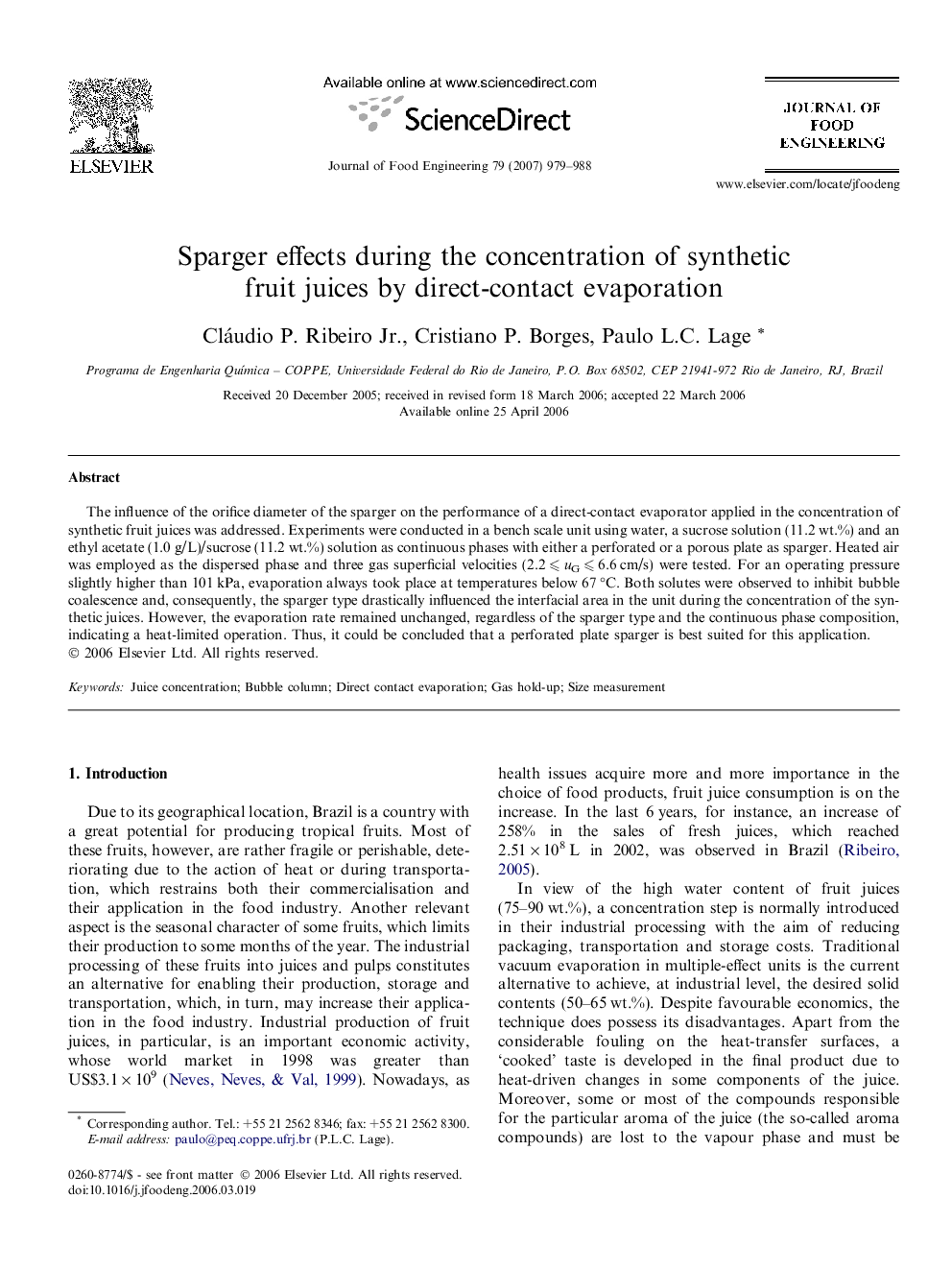| Article ID | Journal | Published Year | Pages | File Type |
|---|---|---|---|---|
| 225667 | Journal of Food Engineering | 2007 | 10 Pages |
The influence of the orifice diameter of the sparger on the performance of a direct-contact evaporator applied in the concentration of synthetic fruit juices was addressed. Experiments were conducted in a bench scale unit using water, a sucrose solution (11.2 wt.%) and an ethyl acetate (1.0 g/L)/sucrose (11.2 wt.%) solution as continuous phases with either a perforated or a porous plate as sparger. Heated air was employed as the dispersed phase and three gas superficial velocities (2.2 ⩽ uG ⩽ 6.6 cm/s) were tested. For an operating pressure slightly higher than 101 kPa, evaporation always took place at temperatures below 67 °C. Both solutes were observed to inhibit bubble coalescence and, consequently, the sparger type drastically influenced the interfacial area in the unit during the concentration of the synthetic juices. However, the evaporation rate remained unchanged, regardless of the sparger type and the continuous phase composition, indicating a heat-limited operation. Thus, it could be concluded that a perforated plate sparger is best suited for this application.
